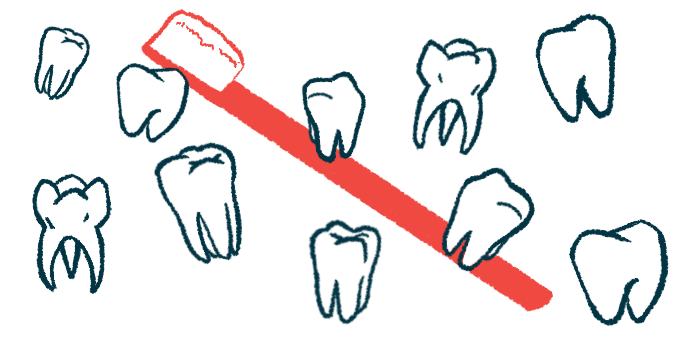Study finds poorer oral health in Sjögren’s patients vs others
Researchers say decay, wear worse despite generally good hygiene practices

People with Sjögren’s disease tend to have poor oral health relative to the general population, despite generally good hygiene practices, a study found.
Sjögren’s was associated with tooth decay, cavities, and wear, ultimately requiring more procedures to restore teeth. Hyposalivation, a common Sjögren’s disease symptom in which the body does not produce enough saliva, may explain this phenomenon, the researchers said. The study showed that some poorer oral health outcomes corresponded with lower saliva production.
The researchers also found that quality of life metrics related to oral health were poorer in people with Sjögren’s. “Effective management of hyposalivation is essential to mitigate … oral complications and to preserve long-term oral and general health,” the team wrote.
The study, “Dental needs in patients with Sjögren’s disease compared to the general population: A cross-sectional study,” was published in the Journal of Dentistry.
Sjögren’s is caused by the immune system mistakenly attacking the body’s own cells. This particularly affects cells involved in producing tears and saliva, leading to hyposalivation and dry mouth. Saliva helps maintain equilibrium in the mouth and facilitate chewing, so dry mouth can lead to oral health complications.
Good habits, poor oral health
The study was a follow-up to a recent large study of oral health in the general population in France. The researchers focused on people with Sjögren’s, using participants in the original study (822 people in total) as the control population.
The research team recruited 38 adults with Sjögren’s to undergo a detailed oral exam and answer questions about their oral hygiene habits and quality of life. Compared with the general population in the control group, the Sjögren’s population was older and more heavily skewed towards women.
Most participants (79%) had primary Sjögren’s, an isolated form of the disease. The remainder had secondary Sjögren’s, associated with another autoimmune disorder.
Compared with controls, people with Sjögren’s tended to visit the dentist more regularly, with 87% going once or twice a year. The vast majority (95%) brushed their teeth at least once a day. While people with Sjögren’s also tended not to smoke or engage in poor eating habits that could affect oral health, they had higher rates of acid reflux, which can lead to dental erosion, and more visible heavy dental plaque.
Having Sjögren’s correlated with worse oral health, despite the group’s generally hygienic habits. People with Sjögren’s had a mean of 2.9 oral lesions associated with tooth decay, called carious lesions. This was more than twice as many as in the control group, which had a mean of 1.4. Most of the lesions in the Sjögren’s group were mild ones that were not yet cavities.
The Sjögren’s group had nearly double the number of tooth restorations, on average, than the control group (14.4 vs 7.5). A greater proportion of participants with Sjögren’s exhibited tooth wear as well (86% vs 38%).
“In cases of mismatch between the number of carious and wear lesions and restored teeth and the patient’s oral hygiene, diet and follow-up habits, it may therefore be pertinent to consider the possibility of a salivary disorder that could explain the situation,” the researchers wrote.
Corresponding to this theory, the number of carious lesions increased as rates of saliva production decreased. The severity of tooth wear lesions also varied depending on the rate of saliva production.
Participants completed a survey assessing how oral health affected their quality of life, including questions about difficulties with speaking, eating, and the emotional impact of issues related to their teeth, mouth, or dentures.
In every category, people with Sjögren’s had poorer outcomes than the control group. This difference reached statistical significance in all but one category.
“The considerable impact of [Sjögren’s disease] on oral health-related quality of life demonstrates the value of an interdisciplinary approach for addressing both systemic and oral aspects of the disease,” the researchers wrote.
They cautioned against over-generalization from their small sample size, and noted that some participants are now receiving treatments that could increase their saliva production. These included salivary substitutes and pilocarpine (sold as Salagen and others).
Future studies will need to test if preventive strategies, such as increasing fluoride intake or rinsing with a sodium bicarbonate (baking soda) solution, could improve oral health outcomes, according to the team. With the increased risk of decay, wear, and replacement in the Sjögren’s group, “such oral manifestations may serve as early indicators for diagnosis,” they wrote.






